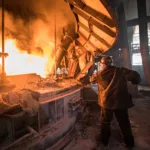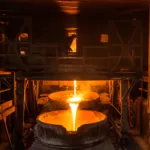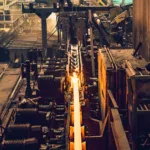Avoid Costly Failures in Furnace and Ladle Operations
In high-temperature industrial furnaces and ladle systems, refractory linings are essential for safe and efficient metal production. However, these materials are not ready for immediate use after installation. They must first undergo a critical pre-conditioning step: sintering. Skipping or incorrectly performing this process can lead to poor refractory performance and significant losses in your production line.
In this article, we explain the technical consequences of unsintered refractories, their impact on operations, and why a controlled sintering process is vital for long-term reliability.
What is Sintering?
Sintering is a controlled heating process that structurally hardens the refractory lining before full operation. This process:
-
Activates chemical and cementitious binders within the material
-
Forms a dense, sealed surface layer
-
Enhances resistance to thermal shock and molten metal contact
Risks of Using Unsintered Refractories
1. Surface Cracks & Spalling
When refractories are exposed to high heat without prior sintering, the sudden thermal load causes:
-
Microcracks
-
Flaking and surface spalling
-
Partial material collapse
These defects allow molten metal to penetrate the lining, potentially causing leaks or dangerous failures.
2. Thermal Shock Damage
Without proper sintering, internal structure remains unstable. Uneven expansion under heat leads to:
-
Internal stresses
-
Layer separation or “popping”
-
Structural collapse from within
These issues often appear after several production cycles, not necessarily during the first heat-up.
3. Loss of Sealing Integrity
Sintering helps close the pores in refractory material. Without it:
-
Molten metal may seep through micro-porosity
-
Gas and steam can build up behind the lining
-
Risk of explosions or blowouts increases significantly
4. Inefficient Melting Behavior
Unstable linings absorb and release heat inconsistently. As a result:
-
Furnace heating becomes delayed
-
Melting rates drop
-
Energy and electrode consumption increases
5. Drastically Shortened Service Life
A properly sintered ladle may last 150–200 casting cycles. Without sintering, it may degrade after only 20–30 cycles, leading to:
-
Disruption of scheduled maintenance
-
Unexpected downtime
-
Increased labor and spare part costs
Common Sintering Mistakes
-
Applying full heat immediately after installation
-
Rapidly increasing temperature steps
-
Skipping the drying phase
-
Using insufficient peak sintering temperatures
-
Not holding high temperature long enough
-
Charging molten metal too early
How to Perform Proper Sintering (General Guidelines)
-
Initial 24 hours: Allow drying at ambient temperature
-
First stage: Heat slowly to 200–400°C with low power
-
Next stage: Gradually raise temperature to 1000–1100°C
-
Hold: Maintain peak temperature for 2–3 hours
-
Cooling: Let temperature drop naturally and evenly
Each furnace and refractory formula should have its own custom sintering curve.
How Alpha Refractory LLC Helps You Prevent Losses
We offer full engineering support for sintering operations, including:
-
Custom sintering programs tailored to refractory type
-
On-site temperature tracking and supervision
-
Guidance on drying and preheating equipment
-
Performance reports based on furnace behavior and downtime
-
Training for operators and full supervisory services
With Alpha Refractory LLC, you gain more than materials—you gain long-term reliability, lower maintenance costs, and the confidence of knowing your equipment is protected from the start.




